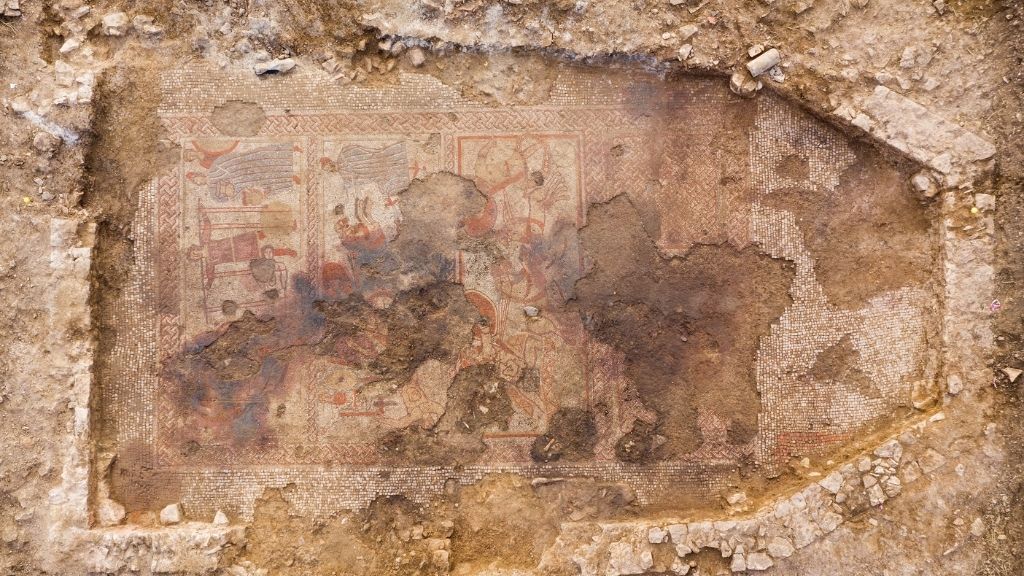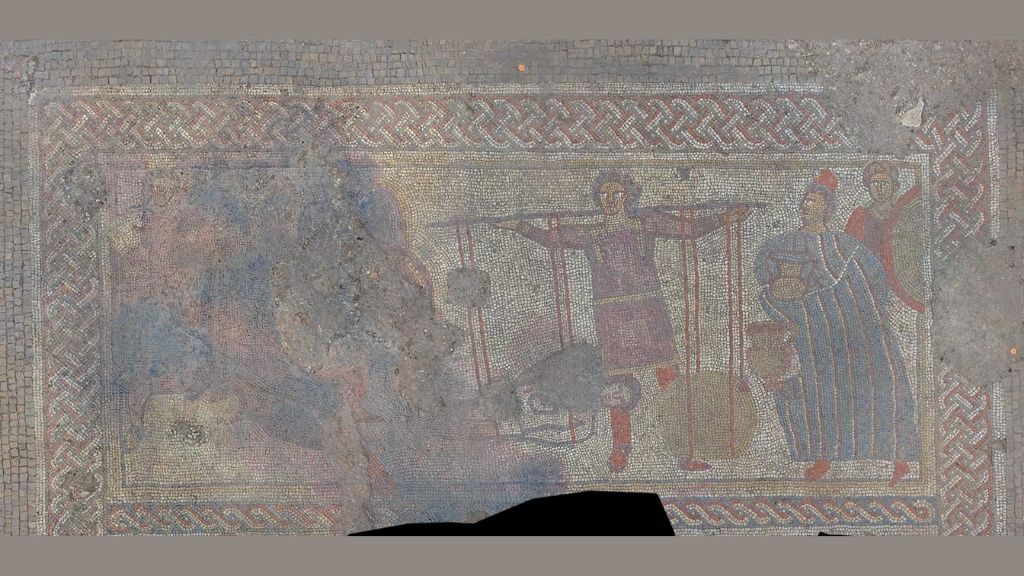UK man stumbles upon 800-square-foot Roman mosaic on his father's farm
The mosaic is surrounded by the remains of a sprawling Roman villa.

A U.K. man's leisurely stroll on his father's farm led to the discovery of an expansive Roman villa complex and striking mosaic beneath the soil.
"I noticed these bits of pottery, oyster shells and what I now know to be orange Roman roof tiles," Jim Irvine, son of farmer Brian Naylor, told i, a U.K.-based newspaper. Irvine spotted the artifacts in the summer of 2020 while he, his wife and his daughters were taking a walk across the farm, located in the county of Rutland. Out of curiosity, Irvine looked up the site of his discovery on Google Earth and saw a distinct crop mark in the field — one that his family had never noticed in their decades working the land.
After contacting a local museum, Irvine and his father returned to the site with spades and began digging through the soil near the outcrop; soon, they'd uncovered a few rusty red tiles of the mosaic beneath.
Related: Photos: Lost Roman mosaics of southern France

"Because of the crop mark I knew there would be something to find. I was hoping for the top of a wall; I never expected in a million years to come across a mosaic, especially one as special as this," Irvine told the i newspaper. "I knew we had to proceed very carefully and after a couple of hours I realized it was time to call in the specialists."
A team of experts then began excavating the site. These specialists included the archaeological team at Leicestershire County Council, staff and students from the University of Leicester's School of Archaeology and Ancient History, and Historic England, part of the British government sponsored by the Department for Digital, Culture, Media and Sport , according to a statement.

Over the past year, the archaeological team uncovered not only the rest of the mosaic initially found by Irvine's family but also a slew of other structures nearby, including barns and a potential bath house. The villa complex was likely occupied between the third and fourth century, the team determined.
Get the world’s most fascinating discoveries delivered straight to your inbox.
The newfound mosaic measures about 36 feet (11 meters) by 23 feet (7 m) and depicts the scene from Homer's "The Iliad," in which the Greek warrior Achilles battles the Trojan prince Hector at the end of the Trojan War. The mosaic likely first served as the floor of a dining room or entertaining area, but cracks and fire damage to some of the tiles hint that the room was later repurposed. Some human remains were found buried above the mosaic, and the archaeologists suspect that these were interred after the building was no longer occupied, according to the statement.
"This is certainly the most exciting Roman mosaic discovery in the U.K. in the last century," John Thomas, the deputy director of University of Leicester Archaeological Services and project manager on the excavations, said in the statement. "The fact that we have the wider context of the surrounding complex is also hugely significant, because previous excavations on Roman villas have only been able to capture partial pictures of settlement[s] like these, but this appears to be a very well-preserved example of a villa in its entirety."
Read more about the discovery in the i newspaper.
Originally published on Live Science.

Nicoletta Lanese is the health channel editor at Live Science and was previously a news editor and staff writer at the site. She holds a graduate certificate in science communication from UC Santa Cruz and degrees in neuroscience and dance from the University of Florida. Her work has appeared in The Scientist, Science News, the Mercury News, Mongabay and Stanford Medicine Magazine, among other outlets. Based in NYC, she also remains heavily involved in dance and performs in local choreographers' work.


